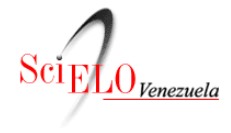Respuesta inmunitaria anti-SARS-CoV-2: Infección Natural vs. Vacunación
Palabras clave:
SARS-CoV-2, Infección natural, Vacunación, Respuesta inmunitariaResumen
Este trabajo es una revisión bibliográfica que compara la inmunidad anti-SARS-CoV-2 inducida por la infección natural y la inducida por vacunación, para entender las particularidades de la respuesta en cada caso, así como sus ventajas y desventajas. Se escogieron artículos que reportaran la medición de concentración de anticuerpos séricos, determinantes de inmunidad celular y/o evolución clínica de los pacientes. Se encontró que: A) Los pacientes recuperados de una infección por SARS-CoV-2 presentaron una respuesta mayor y más heterogénea de anticuerpos y células B de memoria que los pacientes vacunados, con un mayor número de linfocitos T CD4+, que cooperan con la diferenciación de linfocitos B y con la producción de anticuerpos neutralizantes. B) La vacunación previene la tormenta de citocinas asociada a la infección natural. C) Dos dosis de una vacuna basada en ARN mensajero logran una concentración de anticuerpos de clase IgG prácticamente igual a la de los pacientes severamente enfermos, pero sin el daño a los nódulos linfáticos asociado a la infección natural. D) Se puede aumentar el número de linfocitos B administrando dosis de refuerzo de la vacuna. Si bien, tanto la vacunación como la infección natural generan respuestas anti-SARS-CoV-2 significativas, la vacunación es el método más seguro para proteger a la población, pues evita el riesgo a la inmunopatología y a la mortalidad asociados con la infección natural. Más aún, la inmunidad híbrida (aquella que adquieren los pacientes que superaron la infección natural y fueron después vacunados) induce una producción de anticuerpos capaces de neutralizar por completo al SARS-CoV-2.
Descargas
Citas
Diamond MS, Kanneganti TD: Innate immunity: the first line of defense against SARS-CoV-2. Nat Immunol 2022;23:165–176.
Blanco-Melo D, Nilsson-Payant B, Liu W, Ulh S, Hoagland D, Moler R, et al. Imbalanced host response to SARSCoV-2 drives development of COVID-19. Cell 2020; 181:1036-1045.
Giamarellos-Bourboulis EJ, Netea MG, Rovina N, Akinosoglou K, Antoniadou A, Antonakos N, et al. Complex immune dysregulation in COVID-19 patients with severe respiratory failure. Cell Host Microbe 2020;27(6):992-1000.
COVID-19 Excess Mortality Collaborators: Estimating excess mortality due to the COVID-19 pandemic: a systematic analysis of COVID-19-related mortality, 2020–21. Lancet 2022; 399: 1513–1536.
Zhao J, Zhao J, Mangalam AK, Channappanavar R, Fett C, Meyerholz DK, et al. Airway memory CD4(+) T cells mediate protective immunity against emerging respiratory coronaviruses. Immunity 2016; 44(6):1379-1391.
Zhang S, Wang L, Cheng G. The battle between host and SARS-CoV-2: Innate immunity and viral evasión strategies. Mol er 2022; 30(5):1869- 1884.
Bartleson JM, Radenkovic D, Covarrubias AJ, Furman D, Winer DA, Verdin E. SARS-CoV-2, COVID-19 and the ageing immune system. Nat Aging 2021; 1(9):769-782.
Wong CK, Lam CW, Wu AK, Ip WK, Lee NL, Chan IH, et al. Plasma inflammatory cytokines and chemokines in severe acute respiratory syndrome. Clin Exp Immunol 2004; 136(1):95-103.
Hadjadj J, Yatim N, Barnabei L, Corneau A, Boussier J, Smith N, et al. Impaired type I interferon activity and inflammatory responses in severe COVID-19 patients. Science 2020; 369:718-724.
Harrison AG, Lin T, Wang P: Mechanisms of SARS-CoV-2 transmission and pathogenesis. Trends Immunol 2020; 41(12):1100-1115.
Kuri-Cervantes L, Pampena MB, Meng W, Rosenfeld AM, Ittner CAG, Weisman AR, et al. Comprehensive mapping of immune perturbations associated with severe COVID-19. Sci Immunol 2020; 5: eabd7114.
Del Valle DM, Kim-Schulze S, Huang HH, Beckmann ND, Nirenberg S, Wang B, et al. An inflammatory cytokine signature predicts COVID-19 severity and survival. Nat Med 2020; 26: 1636–1643.
Zhou R, To KK, Wong YC, Liu L, Zhou B, Li X, et al. Acute SARS-CoV-2 infection impairs dendritic cell and T cell responses. Immunity 2020; 53(4):864-877.
Sette A, Crotty S. Adaptive immunity to SARS-CoV-2 and COVID-19. Cell 2021; 184(4):861-880.
Brouwer PJM, Caniels TG, van der Straten K, Snitselaar JL, Aldon Y, Bangaru S, et al. Potent neutralizing antibodies from COVID-19 patients define multiple targets of vulnerability. Science 2020; 369: 643–650.
Grifoni A, Weiskopf D, Ramirez SI, Mateus J, Dan JM, Moderbacher CR, et al. Targets of T cell responses to SARSCoV-2 coronavirus in humans with COVID-19 disease and unexposed individuals. Cell 2020; 181:1489–1501.
Peng Y, Mentzer AJ, Liu G, Yao X, Yin Z, Dong D, et al. Broad and strong memory CD4+ and CD8+ T cells induced by SARS-CoV-2 in UK convalescent individuals following COVID-19. Nat Immunol 2020; 21:1336–1345.
Robbiani DF, Gaebler C, Muecksch F, Lorenzi JCC, Wang Z, Cho A, et al. Convergent antibody responses to SARS-CoV-2 in convalescent individuals. Nature 2020; 584:437–442.
Baumgarth N, Nikolich-Zugich J, Lee FE, Bhattacharya D. Antibody Responses to SARS-CoV-2: Let's Stick to Known Knowns. J Immunol 2020; 205(9):2342-2350.
Dan JM, Mateus J, Kato Y, Hastie KM, Yu ED, Faliti CE, et alImmunological memory to SARS-CoV-2 assessed for up to eight months after infection. Science 2021; 371(6529):eabf4063.
Wajnberg A, Amanat F, Firpo A, Altman DR, Bailey MJ, Mansour M, et al. Robust neutralizing antibodies to SARS-CoV-2 infection persist for months. Science 2020; 370: 1227–1230.
Rodda LB, Netland J, Shehata L, Pruner KB, Morawski PA, ouvenel CD, et al. Functional SARS-CoV-2-Specific Immune Memory Persists aer Mild COVID-19. Cell 2021; 184(1):169-183.
Gaebler C, Wang Z, Lorenzi JCC, Muecksch F, Finkin S, Tokuyama M, et al. Evolution of antibody immunity to SARS-CoV-2. Nature 2021; 591(7851):639-644.
Zuo J, Dowell AC, Pearce H, Verma K, Long HM, Begum J, et al. Robust SARS-CoV-2-specific T cell immunity is maintained at 6 months following primary infection. Nat Immunol 2021; 22(5):620-626.
Amanna IJ, Carlson NE, Slia MK. Duration of humoral immunity to common viral and vaccine antigens. N Engl J Med 2007; 357(19):1903-1915.
Estcourt L, Callum J. Convalescent plasma for COVID-19 – Making sense of inconsistencies. N Engl J Med 2022;386:1753-1754.
Wang Z, Muecksch F, Schaefer-Babajew D, Finkin S, Viant C, Gaebler C, et al. Naturally enhanced neutralizing breadth against SARS-CoV-2 one year after infection. Nature 2021; 595(7867):426-431. Maura J Petro Oropeza, et al. Respuesta inmunitaria anti-SARS-CoV-2: Infección Natural vs. Vacunac
Cho A, Muecksch F, Schaefer-Babajew D, Wang Z, Finkin S, Gaebler C, et al. Anti-SARS-CoV-2 receptor-binding domain antibody evolution aer mRNA vaccination. Nature 2021; 600(7889):517-522.
Yang C, Jiang M, Wang X, Tang X, Fang S, Li H, et al. Viral RNA level, serum antibody responses, and transmission risk in recovered COVID-19 patients with recurrent positive SARS-CoV-2 RNA test results: a population-based observational cohort study. Emerg Microbes Infect 2020; 9(1):2368-2378.
Schmidt F, Weisblum Y, Rutkowska M, Poston D, DaSilva J, Zhang F, et al. High genetic barrier to SARS-CoV-2 polyclonal neutralizing antibody escape. Nature 2021; 600(7889):512–516.
Publicado
Cómo citar
Número
Sección
Licencia
Usted es libre de:
- Compartir — copiar y redistribuir el material en cualquier medio o formato
- Adaptar — remezclar, transformar y construir a partir del material
- para cualquier propósito, incluso comercialmente.
Bajo los siguientes términos:
-
Atribución — Usted debe dar crédito de manera adecuada, brindar un enlace a la licencia, e indicar si se han realizado cambios. Puede hacerlo en cualquier forma razonable, pero no de forma tal que sugiera que usted o su uso tienen el apoyo de la licenciante.
- No hay restricciones adicionales — No puede aplicar términos legales ni medidas tecnológicas que restrinjan legalmente a otras a hacer cualquier uso permitido por la licencia.














